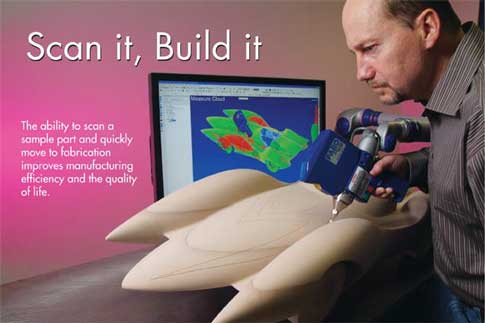
When Gabe Draguicevich was asked to help fabricate a titanium hip implant based on CT (computed tomography, also known as CAT) scan data, he had to coordinate numerous technologies to complete the project. Because the CT data consisted of 2-D cross-sections, Draguicevich had to stack and align the individual scans to create a 3-D model, which he used to create a polygonal mesh in the form of a stereolithography (STL) file. After creating a prototype, he had to verify it against the original scan data, which was no mean feat considering that software capable of providing deviation analysis of the model surface to the STL file did not exist. Finally, Draguicevich created a wireframe model from the STL mesh to machine the final product. The entire process took approximately two weeks to complete.
That was 20 years ago. According to Draguicevich, “If I had the tools that are available today, I could have simply taken the CT scan data and created the STL mesh in one step, and then machined directly from the mesh. The data-processing capabilities of modern software have made the entire process painless compared to years past. Furthermore, I could have taken the finished piece and inspected it for accuracy using the original scan data as the reference. Any deviations could have been addressed by modifying the finished part in coordination with the inspection process.”
…
Comments
Add new comment